- Clone
- A20 (See other available formats)
- Regulatory Status
- RUO
- Other Names
- T200, Ly-5.1, LCA
- Isotype
- Mouse (A.SW) IgG2a, κ
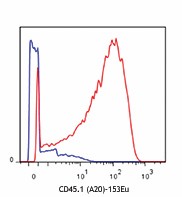
-

NOD (red) and C57BL/6 (blue) mouse splenocytes stained with 153Eu-anti-CD45.1 (A20). Data provided by DVS Sciences.
| Cat # | Size | Price | Quantity Check Availability | ||
|---|---|---|---|---|---|
| 110745 | 100 µg | $118.00 | |||
CD45.1 is an alloantigen of CD45, expressed by Ly5.1 bearing mouse strains (e.g., RIII, SJL/J, STS/A, DA). CD45, a member of the protein tyrosine phosphatase (PTP) family, is a 180-240 kD glycoprotein expressed on all hematopoietic cells except mature erythrocytes and platelets. There are multiple isoforms in mice that play key roles in TCR and BCR signal transduction. These isoforms are very specific to the activation and maturation states of the cell as well as specific cell types. The primary ligands for CD45 are galectin-1, CD2, CD3, CD4, TCR, CD22, and Thy-1.
Product Details
- Verified Reactivity
- Mouse
- Antibody Type
- Monoclonal
- Host Species
- Mouse
- Immunogen
- SJL mouse thymocytes and splenocytes
- Formulation
- Phosphate-buffered solution, pH 7.2, containing 0.09% sodium azide and EDTA.
- Preparation
- The antibody was purified by affinity chromatography.
- Concentration
- 1.0 mg/ml
- Storage & Handling
- The antibody solution should be stored undiluted between 2°C and 8°C.
- Application
-
FC - Quality tested
CyTOF® - Verified - Recommended Usage
-
This product is suitable for use with the Maxpar® Metal Labeling Kits. For metal labeling using Maxpar® Ready antibodies, proceed directly to the step to Partially Reduce the Antibody by adding 100 µl of Maxpar® Ready antibody to 100 µl of 4 mM TCEP-R in a 50 kDa filter and continue with the protocol. Always refer to the latest version of Maxpar® User Guide when conjugating Maxpar® Ready antibodies.
- Application Notes
-
The A20 antibody does not react with leukocytes or mouse cells expressing the CD45.2 alloantigen. Additional reported applications (for relevant formats of this clone) include: immunoprecipitation3, in vitro blocking of B cell responses1,2, immunohistochemical staining of frozen sections: OCT embedded7 and acetone-fixed4-6 (direct immunofluorescence detection with fluorochrome conjugated A20 was used in (5) and (6)).
- Additional Product Notes
-
Maxpar® is a registered trademark of Standard BioTools Inc.
-
Application References
(PubMed link indicates BioLegend citation) -
- Yakura H, et al. 1983. J. Exp. Med. 157:1077. (Block)
- Yakura H, et al. 1986. J. Immunol. 136:2729. (Block)
- Shen FW, et al. 1986. Immunogenetics 24:146. (IP)
- Suzuki K, et al. 2000. Immunity 13:691. (IHC-F)
- Werner N, et al. 2002. Arterioscler. Thromb. Vasc. Biol. 22:1567. (IHC-F)
- Lessner SM, et al. 2002. Am. J. Pathol. 160:2145. (FC, IHC-F)
- Chen CC, et al. 2005. P. Natl. Acad. Sci. USA 102:11408 (IHC-F)
- Pascal V, et al. 2007. J. Immunol. 179:1751. (FC)
- Mende I, et al. 2006. Blood 107:1383. (IHC-F, FC)
- Phan TG, et al. 2007. Nature Immunol. 8:992. (FC)
- Wither DR, et al. 2009. J. Immunol. 183:5079. PubMed
- Pascal V, et al.2007. J. Immunol. 179:1751. PubMed
- Lee SW, et al. 2009. J. Immunol. 182:6753. PubMed
- Takada K, et al. 2009. J. Exp Med. 206:2253. PubMed
- Beamer CA, et al. 2007. Am. J. Respir. Cell. Mol. Biol. 37:729. (FC) PubMed
- Li LX, et al. 2010. J. Immunol. 184:1728. PubMed
- Hosoi A, et al. 2008. Cancer Res. 68:3941. (FC) PubMed
- Kenna TJ, et al. 2008. Blood 111:2091. PubMed
- Kohlmeier JE, et al. 2008. Immunity. 29:101. (FC) PubMed
- RRID
-
AB_2565432 (BioLegend Cat. No. 110745)
Antigen Details
- Structure
- Protein tyrosine phosphatase (PTP) family, 180-240 kD
- Distribution
-
All hematopoietic cells except mature erythrocytes and platelets of the CD45.1 strain of mice
- Function
- Phosphatase, T and B cell activation
- Ligand/Receptor
- Galectin-1, CD2, CD3, CD4
- Biology Area
- Cell Biology, Immunology, Inhibitory Molecules, Neuroscience, Neuroscience Cell Markers
- Molecular Family
- CD Molecules
- Antigen References
-
1. Barclay A, et al. 1997. The Leukocyte Antigen FactsBook Academic Press.
2. Trowbridge IS, et al. 1993. Annu. Rev. Immunol. 12:85.
3. Kishihara K, et al. 1993. Cell 74:143.
4. Pulido R, et al. 1988. J. Immunol. 140:3851. - Gene ID
- 19264 View all products for this Gene ID
- UniProt
- View information about CD45.1 on UniProt.org
Other Formats
View All CD45.1 Reagents Request Custom ConjugationCompare Data Across All Formats
This data display is provided for general comparisons between formats.
Your actual data may vary due to variations in samples, target cells, instruments and their settings, staining conditions, and other factors.
If you need assistance with selecting the best format contact our expert technical support team.
-
Biotin anti-mouse CD45.1
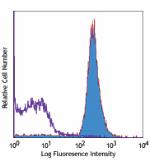
SJL mouse splenocytes stained with biotinylated A20, followe... -
FITC anti-mouse CD45.1
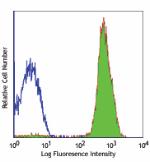
SJL mouse splenocytes stained with A20 FITC -
PE anti-mouse CD45.1
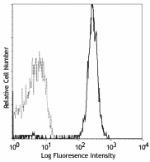
SJL (solid line) and C57BL/6 (broken line) splenocytes stain... -
Purified anti-mouse CD45.1

SJL mouse splenocytes stained with purified A20, followed by... -
APC anti-mouse CD45.1
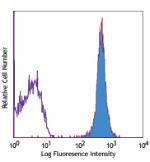
SJL mouse splenocytes stained with A20 APC -
APC/Cyanine7 anti-mouse CD45.1
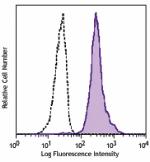
SJL mouse splenocytes were stained with CD45.1 (clone A20) A... -
Alexa Fluor® 488 anti-mouse CD45.1
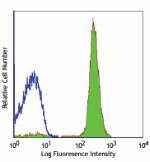
SJL mouse splenocytes stained with A20 Alexa Fluor® 488 -
Alexa Fluor® 647 anti-mouse CD45.1

SJL mouse splenocytes stained with A20 Alexa Fluor® 647 -
Pacific Blue™ anti-mouse CD45.1
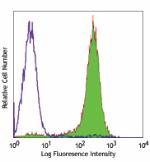
SJL mouse splenocytes stained with A20 Pacific Blue™ -
Alexa Fluor® 700 anti-mouse CD45.1
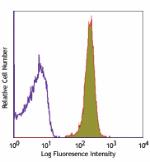
SJL mouse splenocytes stained with A20 Alexa Fluor® 700 -
Brilliant Violet 650™ anti-mouse CD45.1
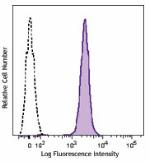
SJL mouse splenocytes were stained with CD45.1 (clone A20) B... -
PerCP anti-mouse CD45.1
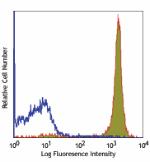
SJL mouse splenocytes stained with A20 PerCP -
PerCP/Cyanine5.5 anti-mouse CD45.1
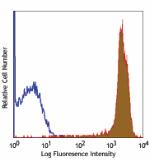
SJL mouse splenocytes stained with A20 PerCP/Cyanine5.5 -
PE/Cyanine7 anti-mouse CD45.1
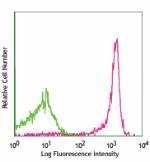
SJL splenocytes stained with A20 PE/Cyanine7 -
Brilliant Violet 421™ anti-mouse CD45.1
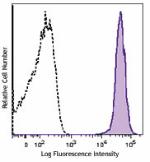
SJL mouse splenocytes were stained with CD45.1 (clone A20) B... 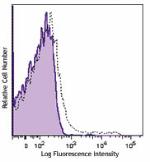
C57BL/6 mouse splenocytes were stained with CD45.1 (clone A2... -
Brilliant Violet 570™ anti-mouse CD45.1
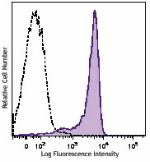
SJL mouse splenocytes were stained with CD45.1 (clone A20) B... -
Brilliant Violet 605™ anti-mouse CD45.1

SJL mouse splenocytes were stained with CD45.1 (clone A20) B... -
Brilliant Violet 711™ anti-mouse CD45.1
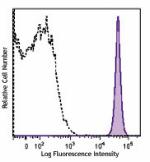
SJL mouse splenocytes were stained with CD45.1 (clone A20) B... -
Brilliant Violet 510™ anti-mouse CD45.1
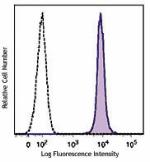
SJL mouse splenocytes were stained with CD45.1 (clone A20) B... -
Brilliant Violet 785™ anti-mouse CD45.1
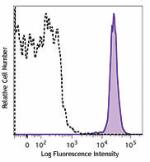
SJL mouse splenocytes were stained with CD45.1 (clone A20) B... -
Purified anti-mouse CD45.1 (Maxpar® Ready)
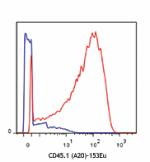
NOD (red) and C57BL/6 (blue) mouse splenocytes stained with ... -
PE/Dazzle™ 594 anti-mouse CD45.1
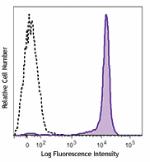
SJL mouse splenocytes were stained with CD45.1 (clone A20) P... -
Alexa Fluor® 594 anti-mouse CD45.1

SJL mouse frozen spleen section was fixed with 4% paraformal... -
APC/Fire™ 750 anti-mouse CD45.1
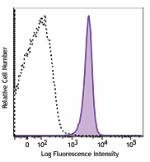
SJL mouse splenocytes were stained with CD45.1 (clone A20) A... -
TotalSeq™-A0178 anti-mouse CD45.1
-
TotalSeq™-B0178 anti-mouse CD45.1
-
TotalSeq™-C0178 anti-mouse CD45.1
-
Spark UV™ 387 anti-mouse CD45.1

SJL mouse splenocytes were surface stained with anti-mouse C... -
Spark Blue™ 550 anti-mouse CD45.1 (Flexi-Fluor™)
-
Spark Red™ 718 anti-mouse CD45.1 (Flexi-Fluor™)
-
Spark Blue™ 574 anti-mouse CD45.1 (Flexi-Fluor™)
